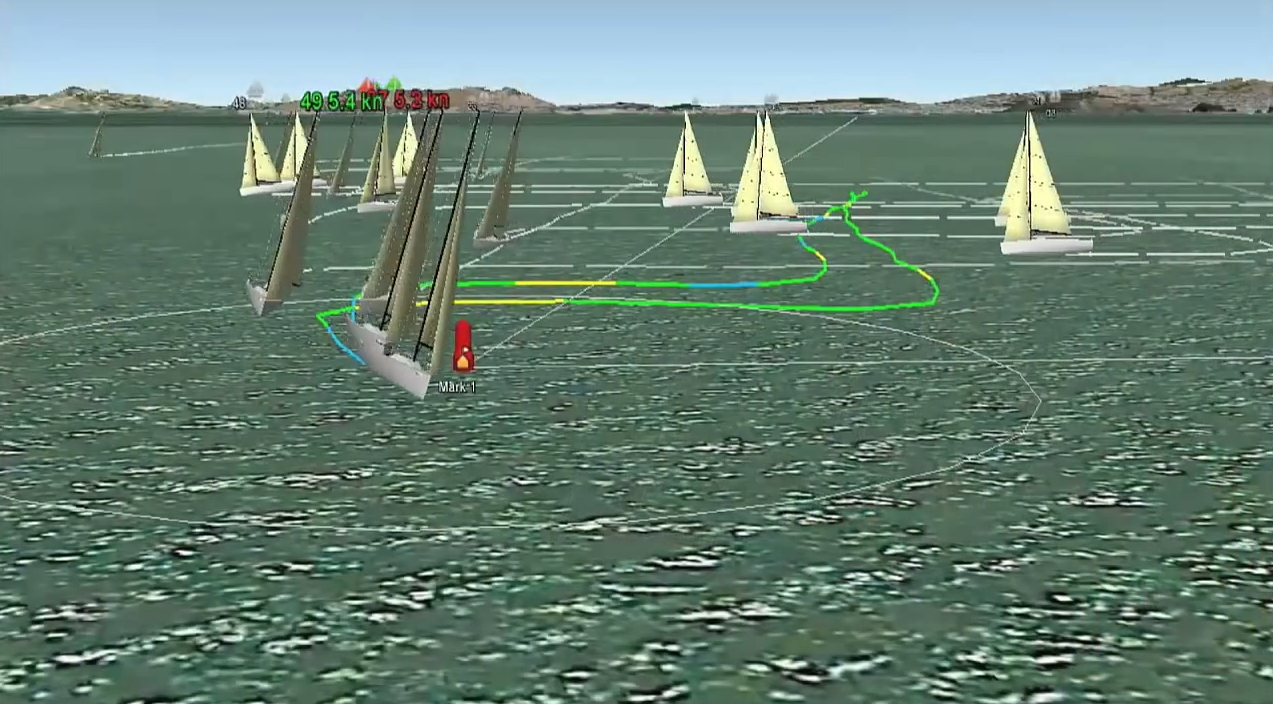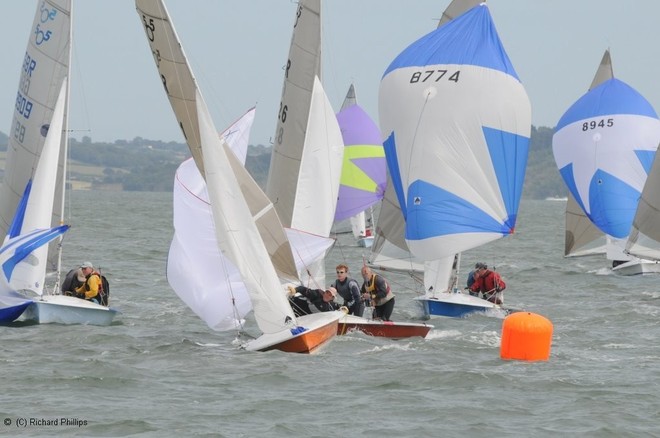In sailboat racing there are four fundamentals you must master: tacking, gybing, spinnaker sets, and spinnaker douses. Until you have these down cold, you can’t really begin to focus on developing front row boat speed, and actual racing (tactics and strategy) will remain a strictly theoretical concept.
So, let’s start with the seemingly simplest maneuver and break down the components of a great tack.
Steering
There are two critical elements to a tack, and you guessed it, steering is number one. First, everyone has to be ready. If the helmsperson simply turns when they feel like it without communicating clearly, the rest of the crew will not have a chance of getting the timing and executing. “Ready about” should demand a response from the one person who is critical, the jib trimmer doing the release. If they aren’t ready, you can’t turn. A simple countdown, “3, 2, 1, turning the boat” also helps with coordination.
The next key is rate of turn. Wherever the expression “hard-alee” came from, it should be banned. The last thing you want to do is turn hard. The rudder is a brake. A slow smooth turn is the goal. Keep in mind one thing: In the middle of the turn, where are you going? Straight upwind, which is where you are trying to go ultimately. If you turn too slowly, you will come out of the tack with not enough speed. You will need to vary your rate of turn depending on breeze velocity and sea state.
In light air you will have to turn faster. Likewise in breezy, bumpy conditions you will have to be concerned about stopping the boat, so a faster rate of turn is required. A rough guideline is that you want to come out off the turn at about two thirds of your upwind target speed going into the tack. Going upwind at six knots, you probably don’t want to drop below four coming out.
The final key to steering through the tack is to come out at the perfect “build” angle. Turn too fast, and you will overshoot, coming out more on a reach. The boat will generate too much heel if there are more than eight-10 knots, and your trimmers will struggle to get the headsail in. Underbake the turn, and you will be too thin and unable to build speed.
The sweet spot is full upwind on the new tack, just a hair below final upwind so you can accelerate. Heel is actually a great guideline. Start slowing the turn just before you get to optimum heel angle, so the boat straightens out just as you hit it. Go too far, too much heel. Not far enough, boat will be too flat. In light air you will need crew weight to generate the right amount of heel. More on that later.
Executing this smooth, controlled turn that ends at just the right build angle is further complicated by the fact that there are usually bodies everywhere blocking your line of sight and generally being disruptive. Practice your footwork. You should use the same steps to cross the boat over time. Stand up and face forward, and keep an eye on the bow and the horizon. The wheel or tiller will not tell you how far to turn. Reference the horizon and your angle to the waves.
To get more tips from Dave Flynn, go to Spinsheet...
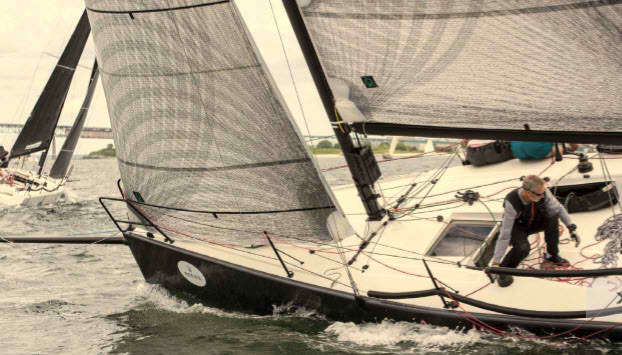

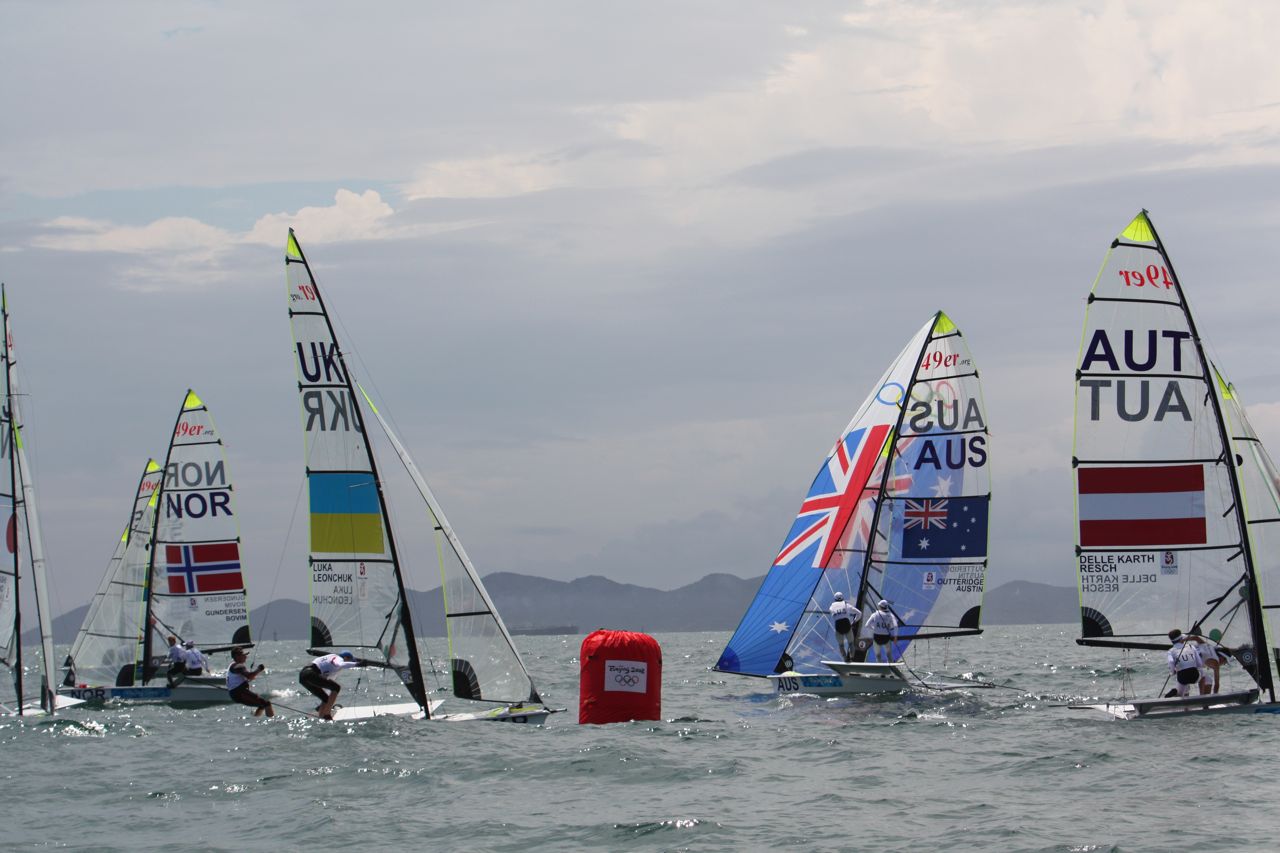 Gybe-hoisting is a tricky manoeuvre to get right, but there can be great tactical reasons for giving it a go. Here are FIVE of the biggest reasons to consider going for this challenging but potentially rewarding move on the race course. This applies mainly to asymmetric dinghies, but there are some valid lessons here for all sailors....
Gybe-hoisting is a tricky manoeuvre to get right, but there can be great tactical reasons for giving it a go. Here are FIVE of the biggest reasons to consider going for this challenging but potentially rewarding move on the race course. This applies mainly to asymmetric dinghies, but there are some valid lessons here for all sailors....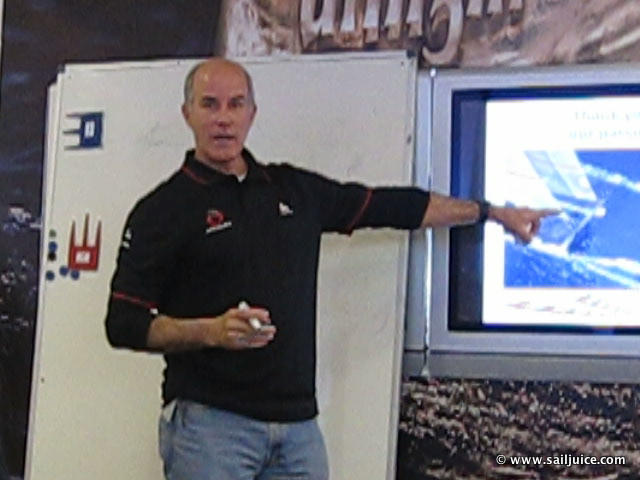 Alinghi helmsman Ed Baird talks through the tactical options for attacking and defending downwind in fast multihulls such as in the 33rd America's Cup. When you sail more than three times wind speed, covering becomes a whole different game...
Alinghi helmsman Ed Baird talks through the tactical options for attacking and defending downwind in fast multihulls such as in the 33rd America's Cup. When you sail more than three times wind speed, covering becomes a whole different game...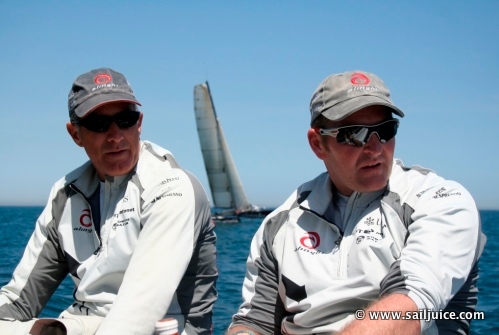 Alinghi helmsman Ed Baird talks through the process of tacking and gybing Alinghi 5, and how it might compare with the way that their America's Cup rivals on BMW Oracle Racing might approach the same manoeuvres...
Alinghi helmsman Ed Baird talks through the process of tacking and gybing Alinghi 5, and how it might compare with the way that their America's Cup rivals on BMW Oracle Racing might approach the same manoeuvres...